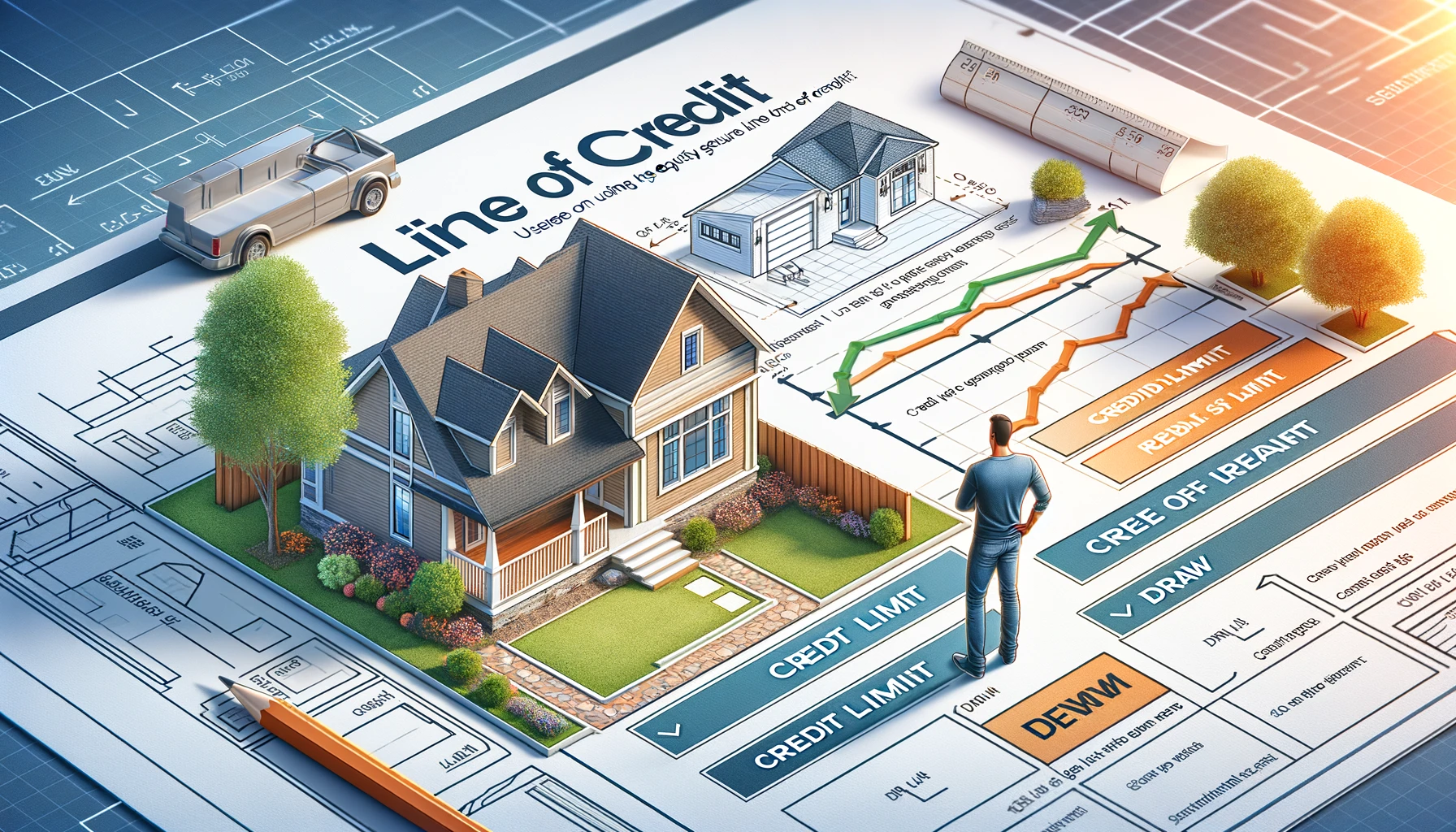
An equity line of credit, often referred to as a Home Equity Line of Credit (HELOC), is a financial product that allows homeowners to borrow money using the equity they have built up in their property. It’s a popular option for those looking to finance home improvements, pay off high-interest debt, or cover unexpected expenses. Let’s dive into what an equity line of credit is, how it works, its benefits and risks, and some tips for managing it effectively.
What is an Equity Line of Credit?
An equity line of credit is a type of loan that leverages the equity in your home as collateral. Equity is the difference between the market value of your home and the amount you still owe on your mortgage. For example, if your home is worth $300,000 and you owe $200,000, you have $100,000 in equity.
A HELOC functions much like a credit card: you are approved for a maximum credit limit, and you can borrow as much as you need up to that limit, repay it, and borrow again. This flexibility makes HELOCs a convenient option for various financial needs.
How Does an Equity Line of Credit Work?
- Application and Approval: To get a HELOC, you must apply with a lender. They will evaluate your home’s value, the amount of equity you have, your credit score, income, and debt-to-income ratio.
- Credit Limit: Once approved, the lender sets a credit limit based on a percentage of your home’s appraised value minus the remaining balance on your mortgage. For instance, if a lender offers 80% of your home’s value and your home is worth $300,000, with $200,000 owed on your mortgage, your HELOC limit would be $40,000 (80% of $300,000 is $240,000, minus $200,000 mortgage balance).
- Draw Period: This is the period during which you can borrow money from the HELOC, usually lasting 5 to 10 years. During this time, you may be required to make interest-only payments.
- Repayment Period: After the draw period ends, the repayment period begins, typically lasting 10 to 20 years. During this time, you can no longer draw from the HELOC and must repay both principal and interest.
- Interest Rates: HELOCs usually have variable interest rates, which means the rate can fluctuate over time based on the prime rate or other index. This can affect your monthly payments.
Benefits of an Equity Line of Credit
- Flexibility: You can borrow as much or as little as you need, when you need it, up to your credit limit.
- Lower Interest Rates: Compared to credit cards and unsecured personal loans, HELOCs typically offer lower interest rates.
- Tax Deductibility: In many cases, the interest paid on a HELOC may be tax-deductible, particularly if the funds are used for home improvements.
- Access to Large Sums of Money: HELOCs can provide access to substantial funds, making them suitable for major expenses like home renovations, medical bills, or education costs.
Risks and Considerations
- Variable Interest Rates: The fluctuating interest rates can lead to unpredictable monthly payments, potentially straining your budget.
- Risk of Foreclosure: Since your home is collateral, failure to repay the HELOC can result in foreclosure.
- Fees and Costs: There may be application fees, appraisal fees, annual fees, and other costs associated with opening and maintaining a HELOC.
- Impact on Credit Score: Like any credit line, mismanagement can negatively impact your credit score.
Tips for Managing a HELOC
- Budget Wisely: Before drawing from your HELOC, ensure you have a clear plan for how you will use and repay the funds. Avoid using it for non-essential expenses.
- Monitor Interest Rates: Keep an eye on interest rate trends and understand how changes might impact your payments.
- Consider Refinancing: If interest rates rise significantly, you might consider refinancing your HELOC into a fixed-rate home equity loan.
- Use for Value-Adding Projects: Ideally, use your HELOC for projects that add value to your home, enhancing your overall financial position.
Conclusion
An equity line of credit can be a valuable financial tool when used responsibly. It offers flexibility and access to funds at relatively low-interest rates, making it suitable for a variety of needs. However, it’s essential to understand the risks, especially the impact of variable interest rates and the potential for foreclosure. By planning carefully and using the HELOC for worthwhile investments, homeowners can make the most of this financial resource.
If you’re considering a HELOC, consult with a financial advisor or mortgage professional to understand how it fits into your overall financial strategy and to explore the best options available to you.


